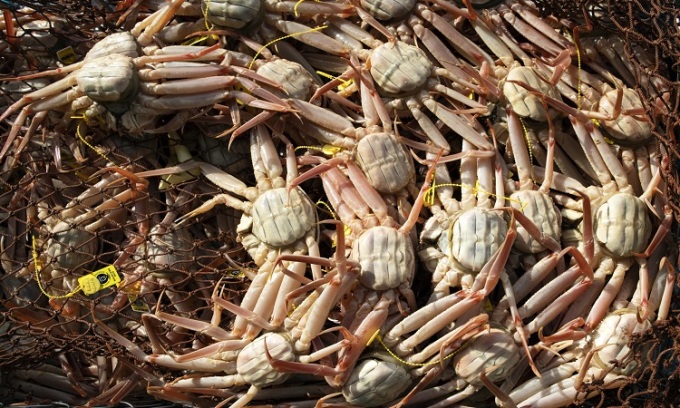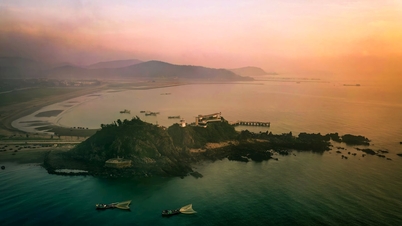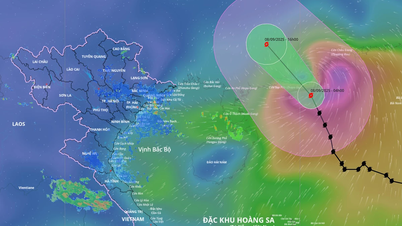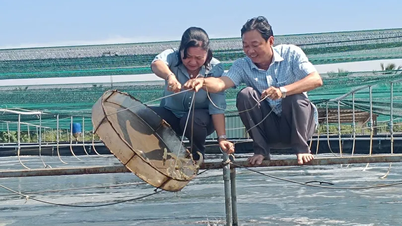The 2018 and 2019 ocean heatwave starved snow crabs in the eastern Bering Sea of their caloric needs, killing more than 10 billion.

Snow crab is a seafood source with high commercial value. Photo: Bloomberg
Snow crabs fell victim to one of the largest heatwave-related die-offs in recorded history, according to new research published on October 19 in the journal Science . A dangerous heatwave struck the polar seas between Alaska and Siberia in 2018 and lasted two years, leading to record-high ocean temperatures and a dramatic decline in sea ice. These unprecedented conditions caused a large population of snow crabs ( Chionoecetes opilio ) living in the eastern Bering Sea to starve. The collapse of the snow crab population was a strong response to the heatwave, according to the research team. Rather than dying directly from warm ocean temperatures, the crabs died from starvation.
Snow crabs are small crustaceans with round shells that can live for up to 20 years in the ocean depths of less than 200 meters, according to the US National Oceanic and Atmospheric Administration (NOAA). The animals are closely monitored and managed in the eastern Bering Sea because they are a valuable commercial seafood resource. Scientists first noticed the sharp decline in snow crab numbers during a 2021 survey. They found the snow crab population was at its lowest in Bering since surveys began in 1975. No surveys were conducted in 2020 due to the pandemic, which is why the team didn't notice the snow crabs disappear until the following year. However, before that, the cause of the crab population collapse remained a mystery.
Warming ocean waters from the heatwave may affect crabs’ metabolism and increase their caloric needs, the study found. Previous laboratory research showed that snow crabs’ energy needs doubled when seawater rose from 0 to 3 degrees Celsius. This temperature increase is comparable to the change juvenile snow crabs experienced from 2017 to 2018. They live in freezing waters and migrate to warmer waters as they mature.
Snow crabs’ increased caloric needs were reflected in changes in body size between 2017 and 2018. The team caught more small crabs during surveys after the heatwave began. Snow crabs also suffered from the hard times. During the heatwave, crab populations in the eastern Bering Sea boomed. The combination of more crabs and higher caloric needs took a toll on them.
Other factors, such as Pacific cod ( Gadus macrocephalus ), which prey on smaller crabs, fishing, and disease, likely contributed to the die-off. However, temperature and population density were the main drivers of the recent collapse. The impact of rapidly rising ocean temperatures and more frequent heat waves due to climate change is difficult to predict. The snow crab die-off, the researchers concluded, is a key example of how quickly a population’s outlook can change.
An Khang (According to Live Science )
Source link











































































































Comment (0)